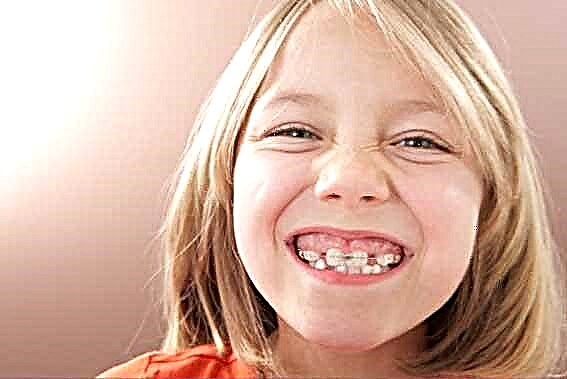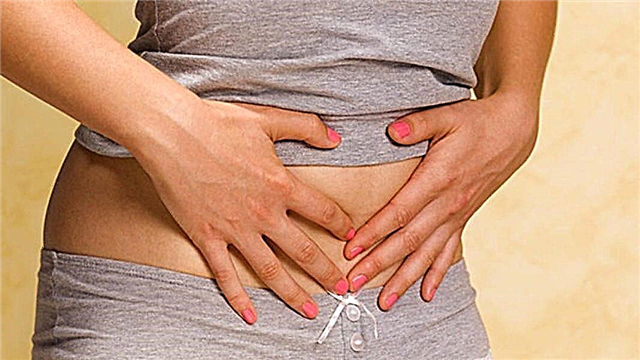The first reaction of parents is anxiety when a newborn coughs and sneezes. However, both coughing and sneezing of the baby perform the elementary functions of the respiratory system: protection from the ingress of harmful substances into the body. This is why, in many cases, moms shouldn't have to worry.

Baby coughs
When coughing and sneezing are dangerous symptoms
Infants, especially those who are breastfed, rarely get sick in the first months of life. The protection they receive from breast milk usually prevents infections from entering their bodies.
However, sometimes infections are still the reason that the newborn coughs and sneezes, there is no temperature, because the baby is not yet strong, and his body's own defenses do not actively counter viruses and bacteria. Also, these symptoms can be the first manifestations of an allergic reaction.
When to be alert:
- A skin rash appears;
- Sputum separates when the child coughs;
- The kid does not fall asleep well, can snore in his sleep, cry, refuses to eat.

Restless baby
Important! When a baby sneezes, coughs, and at the same time has additional symptoms, you should consult a pediatrician.
Factors causing a baby's cough
There are several factors that provoke a cough incomprehensible to parents in an infant.
Physiological
Sneezing is a reflex, or automatic, act that serves to clear the newborn's nose. Any lint or dust on your clothes can trigger sneezing.
The cough reflex is a defense mechanism in the airways. When the baby coughs, they are unblocked and cleared so that air can freely enter the bronchi.
Infectious
If a newborn coughs and occasionally sneezes as a result of respiratory infections or the flu, it is because of a stuffy nose. The baby is forced to breathe through the mouth, then the mucous membrane dries up, and he begins to cough.
Important! The smaller the baby, the lower its ability to breathe through the mouth. Therefore, mucus that clogs the nostrils with ARVI also causes coughing, sneezing, restless behavior of the baby. In this case, it is imperative to rinse the child's nose with saline, use Aqualor or other means.

Rinsing the nose with saline
Non-infectious
Non-infectious cough is not associated with the presence of viruses and bacteria and can be both physiological and caused by allergic reactions or too dry indoor air.
Types of cough
In total, there are two main types of cough:
- Productive is the most common in children, since it serves to clear the airways. A cough of this kind allows you to expel both microorganisms that enter through the respiratory tract and mucus secreted by the bronchi.
Important! Many pediatricians find it inappropriate to treat a productive cough, although sedative home remedies can be used, for example, to warm the bronchial area, etc.
- Irritant or dry. In most cases it is caused by the environment. Only air is expelled from the lungs and bronchi. In many cases, it is explained by allergic problems or external irritants: tobacco smoke, dry air. A dry cough is tiring and irritating to your baby. The doctor will prescribe treatment if necessary.
Other types:
- barking cough that occurs with inflammation of the larynx or trachea;
- a wheezing cough indicating asthma or lower respiratory disease.
Causes of coughing and sneezing without fever
If the baby sneezes and coughs, there is no temperature, this may be due to the following reasons:
- Children still have narrow airways and produce a lot of mucus. This leads to constant sneezing of a month old baby. Even 15-20 times a day is considered normal;
- Sometimes newborns cough during spitting up. Thus, the body prevents the entry of stomach contents into the bronchi;
- Cough when a foreign body gets in. Occurs when a toddler has no previous cold symptoms and suddenly starts coughing continuously.
- Coughing and sneezing in infants can be without fever during teething. During this period, increased salivation occurs, saliva may enter the respiratory tract;
- When a baby coughs and sneezes due to allergies, the temperature usually does not rise.
Important! Allergic symptoms should alert parents, in which case a doctor's consultation is necessary.
How to prevent and calm a cough
Even if a child coughs for natural reasons that are not associated with respiratory and other diseases, in most cases, this reflex can be stopped or weakened.
Methods that can calm a cough:
- Frequent airing;
- Preventing high indoor temperatures and keeping them stable throughout the day;
- Humidification of the air in the room where the child sleeps;

Air humidification
- Placing a slightly higher pillow when falling asleep. This helps to partially clear the airways;
- Let the baby drink more. This is especially useful for productive cough, as it helps to dilute bronchial secretions and facilitate its removal;
- If mucus is present, rinse the nose with saline several times a day;
- Avoid exposure to tobacco smoke;
- In the case of an allergic cough, you need to find out what can provoke it, and eliminate dangerous factors: houseplants, pets, etc.;
- It is necessary to regularly dust and wash the floor, avoiding the use of household chemicals.
Important! Herbal antitussive infusions are not recommended for infants, as their components can provoke allergic reactions.
Drainage massage is a good way to speed up the discharge of sputum during productive cough in infants over three months of age. Do it a few days after the onset of the cough. Approximate order of actions:
- Warm or rub your palms so that they are warm, lubricate the baby's skin with baby cream;
- Put the baby on his tummy, the position should be slightly tilted down towards the head;

Performing a drainage massage
- Rub the baby's back, gently pressing with your fingers. The direction is from the waist to the shoulders. Then turn the baby over and stroke with your hands towards the neck in the central part of the breast. The skin should redden a little;
- Massage for 10 minutes twice a day. After the massage, wrap the baby in a blanket and put it to sleep.
Important! Massage should start half an hour after eating, otherwise vomiting can be provoked.
Most often, a cough in infants without a fever is not dangerous, but if it is prolonged or repeated very often, then it is necessary to keep the situation under control. In some cases, a cough can be a symptom of a disease.



